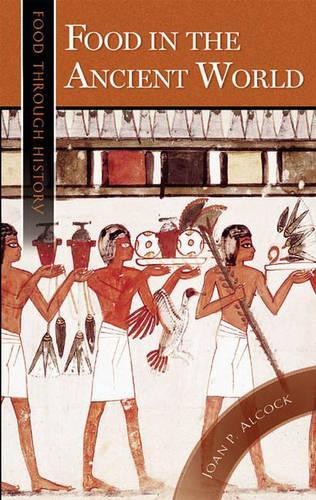
Food in the Ancient World
(Hardback)
Publishing Details
Food in the Ancient World
By (Author) Joan P. Alcock
Bloomsbury Publishing PLC
Greenwood Press
30th December 2005
United States
Classifications
General
Non Fiction
Popular culture
641
Physical Properties
Hardback
312
Width 156mm, Height 235mm
595g
Description
The ways of life of four great ancient civilizations Egyptian, Greek, Roman, and Celticare illuminated here through their foodways. As these cultures moved toward settled agriculture, a time of experimentation and learning began. Cities emerged, and with them consumer societies that needed to be supplied. Food Culture in the Ancient World draws on writings of classical authors such as Petronius, Galen, and Cato, as well as on archeological findings, to present intimate insight into ancient peoples. This volume will be indispensable as it complements classical history, cultural, and literature studies at the high school and college levels and will also inform the general reader. The book begins with an overview of the civilizations and their agricultural practices and trade. A full discussion of available foodstuffs describes the discovery, emergence, usage, and appraisals of a host of ingredients. A subsequent chapter covers food by civilization. Chapters on food preparation, the food professions, and eating habits provide a fascinating look at the social structure, with slaves and women preparing and serving food. Accounts of the gatherings of slaves and freedmen in taverns, inns, and bars and the notorious banquet, symposium, feast, and convivium of the elite are particularly intriguing and crucial to understanding male society. Other aspects of ancient life brought to life for the reader include food for soldiers, food in religious and funerary practices, and concepts of diet and nutrition. Many Classical recipes are interspersed with the text, along with illustrations.
Reviews
[A]n introduction to the food and eating habits of four ancient civilizations: the Greeks, Romans, Egyptians, and Celts. Alcock divides the book into six sections: historical overview, foodstuffs, food preparation and food professions, food by civilization, eating habits, and concepts of diet and nutrition. She also provides a time line and brief biographies of the classical authors mentioned in the book. The prose is clear and there are illustrations. Because this book is written as an introduction, it reads more like a series of encyclopedia entries than a cohesive narrative, but this makes it an easy source for locating general information on the culinary aspect of each civilization.[h]elpful to upper-level high-school students and lower-level undergraduates doing reports on ancient civilizations, and to libraries either starting or adding to a food history collection. General readers; lower- and upper-division undergraduates. * Choice *
Concentrating on four civilizations-Egyptian, Greek, Roman, and Celtic-this fascinating study shows how food was grown, produced, and eaten from the beginnings of Egyptian pre-dynastic civilization until the end of the Roman Empire. Trade in spices and dealing with crop failures are just two topics that indicate how important food production has been in the history of societies. Maps and chapter bibliographies are included. * Curriculum Connections *
In her well-prepared contribution to the growing study of food in historical context, the UK author of Food in Roman Britain (2004) treats food cultivation and consumption by the ancient Roman, Egyptian, Greek, and Celt civilizations. Based on evidence including skeletal remains (some mummies show signs of obesity), Alcock reviews their agricultural practices, food preparation, eating and drinking habits and establishments, and concepts of diet and health. The book includes a timeline, list of the classical authors cited, maps, and food-related illustrations. * Reference & Research Book News *
College-level collections with strong holdings in either ancient history or culinary history will want to take a close look at Food in the Ancient World. * MBR Internet Bookwatch *
Author Bio
Joan P. Alcock is an archeologist and historian and an Honorary Fellow of London South Bank University and a Fellow of the Society of Antiquaries of London. She is the author of Life in Roman Britain (1996) and Food in Roman Britain (2001), among other works.
